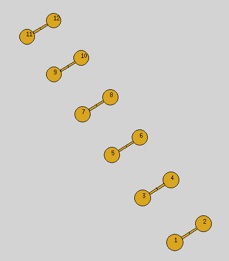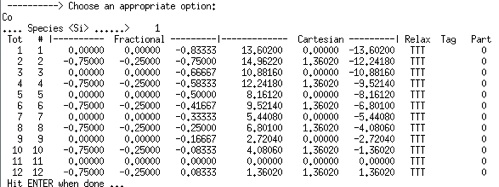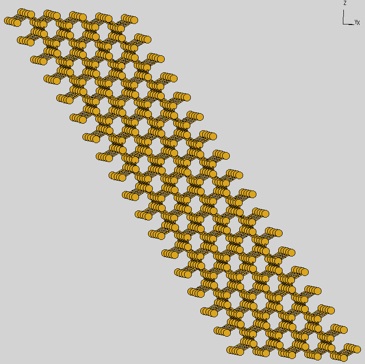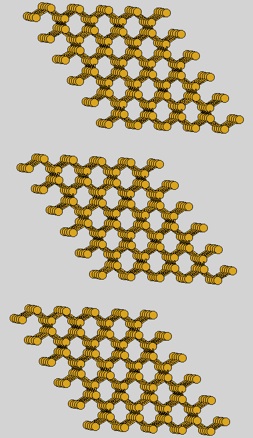c(4x2) Si(001) surface


c(4x2) Si(001) surface


8. Next, we construct a bulk supercell which will be the surface cell extended 6 times along the 3rd direction. Use Ex with 0 0, 0 0 and -5 0 (right). Atoms of the cell, obtained with Co, are shown below. Note that atom 1 is the lowest.


This is still the bulk Si, but with the supercell extended in one direction six fold. This can easily be checked with Bb using say -2 2, -2 2, -1 1 (right):

9. You see, this is still the Si bulk. However, if we introduce a vacuum gap between slabs by extending the 3rd lattice vector, then we shall obtain surface slabs. Use option 8, enter 3 and the new vector, 0.0 0.0, 20.0. Keep the same Bb settings, then the picture on the left is obtained. Unfortunately, we forgot to save the previous vectors as a “reference” system, so now it would be impossible to terminate the bottom layer with H atoms. Undo the last step with U (below), and we return back to the previous 3rd vector:


10. Nullify Bb with B0.